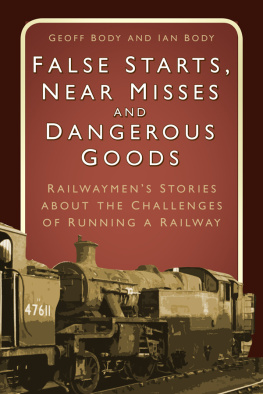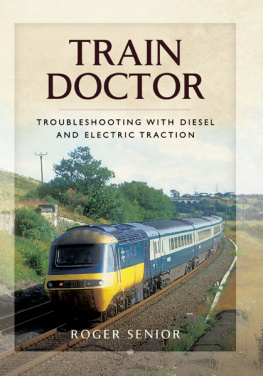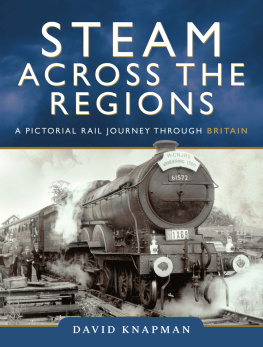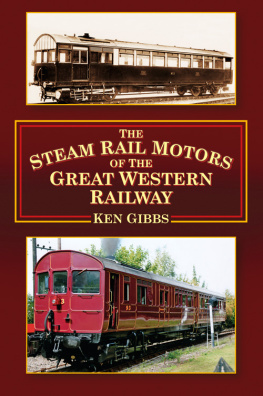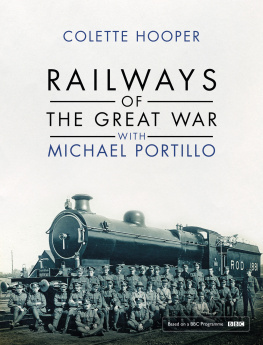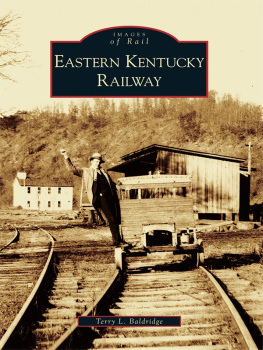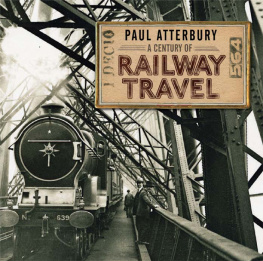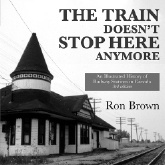Contents
Guide


First published 2018
The History Press
The Mill, Brimscombe Port
Stroud, Gloucestershire, GL5 2QG
www.thehistorypress.co.uk
Geoff Body, Ian Body, 2018
The right of Geoff Body and Ian Body to be identified as the Authors of this work has been asserted in accordance with the Copyright, Designs and Patents Act 1988.
All rights reserved. No part of this book may be reprinted or reproduced or utilised in any form or by any electronic, mechanical or other means, now known or hereafter invented, including photocopying and recording, or in any information storage or retrieval system, without the permission in writing from the Publishers.
British Library Cataloguing in Publication Data.
A catalogue record for this book is available from the British Library.
ISBN 978 0 7509 9034 9
Typesetting and origination by The History Press
Printed and bound by CPI Group (UK) Ltd
eBook converted by Geethik Technologies
CONTENTS
INTRODUCTION AND ACKNOWLEDGEMENTS
When Jim Body joined the Great Northern Railway in June 1916, just after his 13th birthday, the rail network was at its peak, with nearly 24,000 miles of its rails covering the whole country and pervading every aspect of life. Now it has shrunk to less than half its former size and is a totally different activity, one that he would barely have recognised. In the way of these things, there is now a move to reverse something of the long, lean years of line closures which, in doctrinal haste, cost so many important transport routes, such as the Great Central route to Marylebone, and various cross-country lines including those from the Midlands to Kings Lynn and from Oxford to Cambridge.
Jim was born in rural Lincolnshire into a family with a long history as agricultural labourers. His schooling progress provided an opportunity for a major change, and engagement as a lad trainee on the railway, then a highly regarded employment, was a major change in his life. How strange his first days must have been, with the journey to the gaunt railway district office at Peterborough, an interview with austere officials and then arriving at his first station. There he would have been plunged into a world of myriad forms and practices, as well as the earthy excitement of being part of the train romance that he had only known of vaguely before.
The amount of railway change in Jims lifetime was incredible, not just in the trains, track and signalling but also in functional matters all, of course, in stages which Jim needed to understand and embrace. He would have seen two world wars, with the 1923 grouping and the contrast of the General Strike and the dawn of the glamour expresses in between. He was dedicated and loyal to the railway industry and its tradition of public service, and maintained his belief in its traditions for the whole of his fifty-two years of service. This dedication and his ability took the lad trainee to a final well-deserved senior post as a divisional traffic accountant.
Unsurprisingly, Jim communicated much of his enthusiasm for railways to his son, Geoff, who joined the old London & North Eastern Railway at the age of 16 in 1945. The whole system had emerged from the demands of a second major war, worn out but hopeful. It still operated in much the same way but had high hopes for the future which the LNER expressed in a modernisation plan labelled Forward. In his progression from temporary probationary junior male clerk to senior officer, Geoff was also to be part of great changes in Britains railways. The Modernisation Plan of 1954 brought vehicles like railbuses and diesel locomotives; suburban electrification followed and then the overhead lines linked Euston and Glasgow. Semaphore signals and level crossings were modernised, speeds rose dramatically and every facet of the activity improved. But road competition was not to be denied, earnings dropped and Dr Beechings reshaping plan led to a climate of closure which was eventually to see not only a huge reduction in the route mileage but also, in due course, the abandonment of the traditional wagon-load business, newspaper and postal traffic, and the Red Star Parcels service. Privatisation completed the massive changes.
After twenty-eight years, Geoff moved on to managing a road tanker company and subsequently to his own writing and publishing activities which, unsurprisingly, had railways at their core.
By the time Ian joined the railway, this general process of change was continuing, albeit mostly in a downward trend with the early 1980s representing the lowest point for revenue and growth. In 1986, sectorisation saw the arrival of the three passenger subdivisions of InterCity, Regional Railways and Network South East, and things generally began to pick up. The arrival of high-speed trains (HSTs) exemplified the optimism and rate of change along with serious restructuring of the freight business. This process of change was further accelerated by the Railways Act of 1993 which heralded privatisation. While the company names and liveries were perhaps the most obvious change to the public eye, the separation of infrastructure and rolling stock ownership from operation were far more fundamental. Passenger carryings continued to rise significantly, the railways opened their doors to much more external recruitment and the industry began to be judged against other industries rather than as a traditional category of its own. In some ways it had come full circle from Jims days in terms of private ownership, coupled with dramatically advanced operation and technical expertise, but comfortingly, the underlying values of public service and industry comradeship had not changed.
The direct and indirect railway links of these three lives span over a century. In that time they have brought the three people involved great dividends from those they have worked with and the experiences they have gained. We are grateful for both and for the ongoing support for this record provided by Amy Rigg and her colleagues at The History Press.
All photographs are from the authors collection except where specifically acknowledged.
PART ONE
HERBERT (JIM) BODY
By Geoff Body
LAD TRAINEE TO STATION RELIEF CLERK

My father was Herbert Body, Young Jim as everyone called him at first, and then just Jim. He was born into an agricultural workers family at Heckington in Lincolnshire in 1903 but grew up at Great Ponton when they moved there in that same year. Such moves were commonplace in the farming world at that time and the next one was to Corby, only 5 miles away but providing advancement for young Jims father, who was given control of the farms steam machinery. Curiously, a son of the family living next door turned out to be C.K. Bird, who ultimately rose to the top ranks of the London & North Eastern Railway (LNER).
A Lowly Start
Father himself was destined for a railway career, showing enough educational promise to raise the prospect of a scholarship to Grantham Grammar School. Then fate took a hand, as is so often the case, and an opening occurred for a lad trainee on the Great Northern Railway (GNR) at Great Ponton station, on the Kings Cross to York main line. Backed by his headmaster, young Jim secured an interview at the GNR District Office at Peterborough, was appointed to the position at Great Ponton and began his railway career there on 19 June 1916. By now the family had again moved home and the novice railwayman had to find lodgings. This he did, but at 13 his wage was a mere 9




